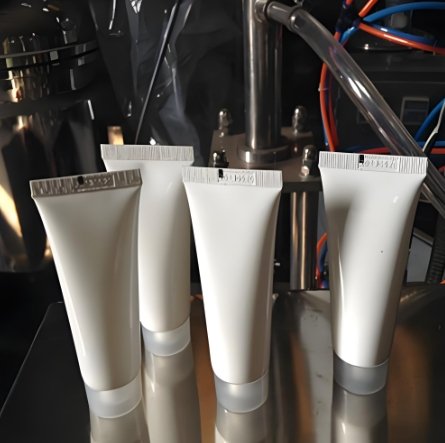
When you’re in the market for a Tube Filling and Sealing Machine, making the right choice is crucial. These machines are essential for businesses that need to fill and seal products quickly and accurately. From cosmetics to pharmaceuticals, the right Automatic Filling Machine can help increase efficiency and reduce waste.
In this article, we will explore key considerations to keep in mind when buying a Tube Filling and Sealing Machine. These factors will ensure that your investment meets your needs and helps your business grow.
1. Machine Type: Automatic vs. Semi-Automatic
The first decision to make is whether to purchase an Automatic Filling Machine or a semi-automatic model. Both have their advantages.
- Automatic Filling Machines are fully automated. They fill and seal tubes without requiring manual input. These machines are ideal for high-volume production. They work faster and more efficiently. They are also less prone to human error, making them suitable for businesses that need to scale quickly.
- Semi-Automatic Machines require some manual effort. Workers load the tubes, while the machine handles the filling and sealing. These machines are typically less expensive and suitable for smaller operations or those with moderate production volumes.
When choosing between automatic and semi-automatic machines, consider your production volume, budget, and labor availability.
2. Tube Compatibility
Not all Tube Filling and Sealing Machines are compatible with every type of tube. Tubes come in various materials, such as plastic, aluminum, and laminate. It’s essential to ensure that the machine you choose can handle the tube material you plan to use.
Some machines are versatile and can handle different types of tubes. Others are specialized for specific materials. If your production requires filling and sealing different tube types, opt for a machine that offers flexibility.
Additionally, consider tube sizes. Make sure the machine can handle your tube’s dimensions. Whether you’re working with small cosmetic tubes or larger pharmaceutical tubes, the machine should be able to accommodate your products efficiently.
3. Filling System
The type of filling system in your Tube Filling and Sealing Machine is critical for accurate and consistent results. Different systems are designed for different liquid viscosities.
- Piston Fillers: These are ideal for thicker products, such as creams, gels, and pastes. They deliver precise amounts of product and work well with a wide range of viscosities.
- Peristaltic Pumps: These are best for filling thinner liquids, such as oils and perfumes. They provide accurate measurements and prevent contamination.
- Gear Pumps: This system is also used for thicker liquids. Gear pumps are commonly found in industrial Automatic Filling Machines. They provide high precision and control over the filling process.
The type of filling system you choose will depend on the nature of your product. Make sure the system can handle the viscosity of your liquid or paste without causing clogs or wastage.
4. Sealing Technology
Proper sealing is essential to ensure that your product remains safe and fresh. The Tube Filling and Sealing Machine must be equipped with the right sealing technology.
- Hot Air Sealing: This method is commonly used for plastic and aluminum tubes. It involves using heated air to seal the tube, creating a secure and durable closure.
- Ultrasonic Sealing: This method is effective for sealing high-end packaging materials, such as laminated tubes. Ultrasonic sealing uses high-frequency vibrations to melt the tube’s end, sealing it with precision.
- Cold Sealing: This is typically used for aluminum tubes. Cold sealing creates a leak-proof seal without the need for heat, making it suitable for certain types of materials.
Choose the sealing technology based on the materials and packaging standards for your product. Different products may require different sealing methods to ensure the integrity of the packaging.
5. Machine Speed and Efficiency
The speed of your Automatic Filling Machine will affect your overall productivity. If you have a high production volume, you will need a machine that can fill and seal tubes quickly.
Look for a machine that can process a high number of tubes per minute (TPM). Some Tube Filling and Sealing Machines can fill and seal over 100 tubes per minute. However, speed is not the only factor to consider. Efficiency is equally important. A faster machine that is prone to errors or breakdowns may not be cost-effective in the long run.
Consider the overall output your business requires and balance speed with reliability.
6. Ease of Operation and Maintenance
Operating a Tube Filling and Sealing Machine should be straightforward. Look for machines with user-friendly controls and interfaces. Machines with touchscreens and automated features are easier to manage, especially for non-technical staff.
Maintenance is another essential consideration. Choose a machine that is easy to clean and maintain. Machines that require frequent downtime for cleaning or troubleshooting can slow down production and reduce efficiency.
Check whether the manufacturer provides detailed manuals, online resources, or support services to assist with any issues. A machine that’s simple to maintain will save you time and money over the years.
7. Cost of the Machine
The cost of the Tube Filling and Sealing Machine is a crucial factor in your decision-making process. Machines can range from a few thousand dollars to hundreds of thousands, depending on the features, automation, and capacity.
While it’s tempting to choose a low-cost option, remember that you get what you pay for. A machine with fewer features might have higher maintenance costs or lower efficiency. It could also result in more waste and inconsistencies in your products.
On the other hand, high-end Automatic Filling Machines may offer advanced features, but they might be outside your budget. Be sure to consider your long-term production goals and balance the upfront cost with future savings in efficiency and labor costs.
8. Regulatory Compliance and Certifications
If you’re working in regulated industries like pharmaceuticals or food production, make sure the Tube Filling and Sealing Machine complies with the relevant regulations. Look for certifications like GMP (Good Manufacturing Practices) and CE marking, which indicate the machine meets required safety and quality standards.
These certifications ensure the machine operates within the legal framework and delivers high-quality results. Compliance with industry standards helps maintain product safety and protect your brand reputation.
9. Support and Warranty
Finally, choose a supplier that offers reliable after-sales support. Machines can experience issues after installation, so it’s essential to have access to maintenance services, spare parts, and troubleshooting assistance.
Also, check the warranty offered by the manufacturer. A comprehensive warranty can save you significant repair costs. Some manufacturers provide long-term warranties that cover key components of the machine.
When buying a Tube Filling and Sealing Machine, there are many factors to consider. From the type of filling system to machine speed, sealing technology, and cost, making the right choice is essential for your business. By understanding your product requirements and operational goals, you can select a machine that fits your needs perfectly.
Remember, investing in the right Automatic Filling Machine will not only streamline your production process but also help improve the quality of your packaged products, reduce waste, and increase efficiency.

